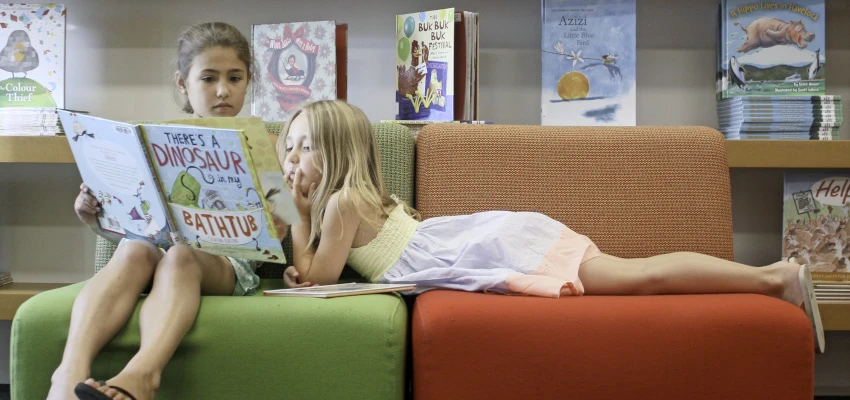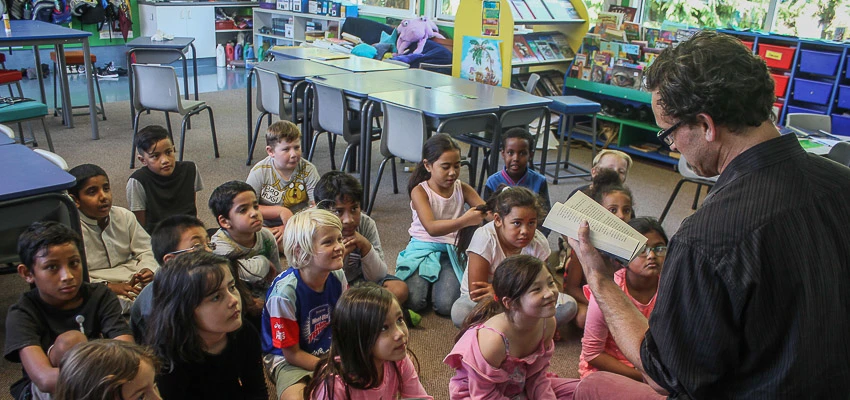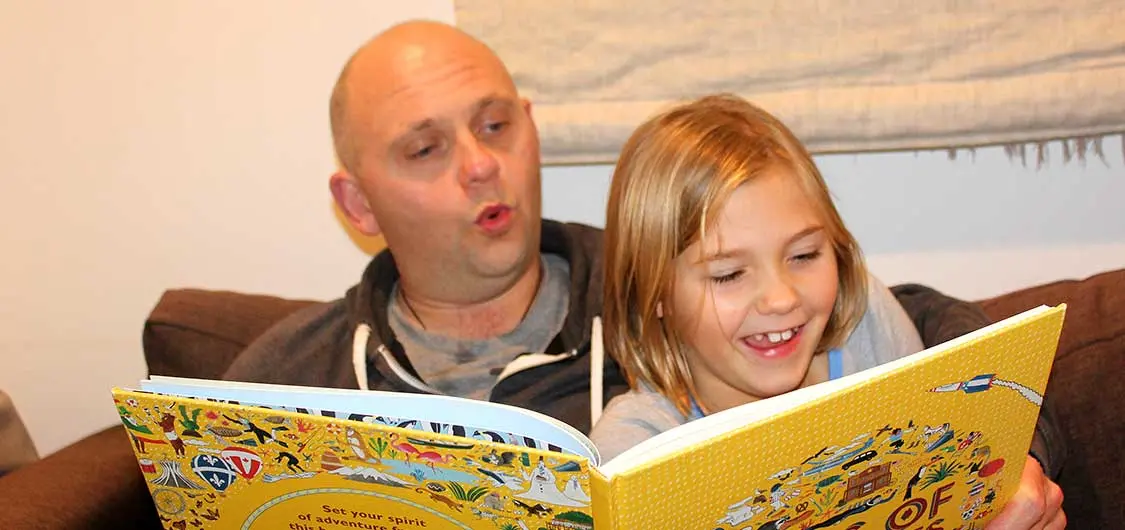
Picture books
Learn what makes a good picture book and how to use them to engage students with reading.
What makes a good picture book
Picture books use illustrations, with or without text, to convey stories, which delight and engage children.
In picture books with text, the author and the illustrator jointly share the responsibility of making the picture book ‘work’.
According to Literary Agent Tracy Marchini, a successful picture book has the following 9 factors:
illustrations that are engaging, varied, and colourful, while adding to the storyline
strong characters that are identifiable and evoke emotion
humour
a story that teaches a concept or value
elements of pattern, rhyme, and repetition
an interesting plot that captures the attention of the reader
rich vocabulary
re-readability.
9 qualities of a successful picture book
The value of words in picture books — in this article for the Bologna Book Fair, Leonard S. Marcus explores what makes a great picture book.
Wordless picture books
Wordless picture books rely on illustrations alone to tell a story. They are a wonderful resource, allowing children to tell the story ‘in their own words’. These books encourage children to:
read the pictures
look at the details
follow patterns and sequences
explore characterisation
work out what is going on and bring their own language to their own version of the story.
A list of Reading Rocket's favourite wordless picture books
Picture books and diversity
The New Zealand Curriculum includes cultural diversity and inclusion as principles that underpin decision-making within schools. A rich and diverse library collection can be a powerful tool for seeing ourselves and the world beyond.
Picture books can show our diversity such as differences in ethnicity, abilities, family structure and gender roles. These websites have good resources:
Revised New Zealand Picture Book Collection — includes 60 picture books that teachers, librarians, authors and publishers nominated in a 2015 online survey.
Mirrors Windows Doors — promotes diversity in children’s and YA books from across the world.
Top multicultural picture books — list curated by Auckland Libraries.
WNDB (We Need Diverse Books) — has links to resources, recommended titles on various themes, and tips for aspiring writers.
Mirrors and windows in our library collections
Building an inclusive collection
Picture books and the mind
Studies involving brain scans of preschool children by the Reading & Literacy Discovery Center of Cincinnati's Children's Hospital found evidence of the ‘potential benefits of reading and the potential detriments of screen time on brain development’. The studies also found that reading picture books are better for children’s brains than video or text.
This is your child's brain on books: Scans show benefit of reading vs. screen time
Illustrated story books are better for kids' brains than video or text, study finds
Using picture books to inspire readers
Reading aloud
Picture books can be read to children of all ages — from babies through to teenagers. Sophisticated picture books make great read-alouds for secondary students, who appreciate the layered meanings and themes.
Read aloud regularly, regardless of the age of the students.
The best picture books provide an appealing mix of engaging story, strong characters, rich language and visual wonder.
The greater your knowledge of the books, the greater your ability to inspire a love of reading, writing and inquiry.
Picture books are relevant for all ages
Exploring picture books
Talking with children about picture books stimulates wonderings while building comprehension, empathy, and visual and critical literacy. Draw attention to how the book is designed and its look and feel. Use questions that cover aspects such as how:
illustrations fill in the words, add to the story, or give a different perspective
the narrative is carried through the book.
Scholastic New Zealand picture books — a collection of Aotearoa NZ picture books, many of which have teacher notes and activities.
Picture books can also be great starting points for exploring a topic and as mentor texts and frameworks to inspire creative writing.
Children’s mathematics picture books — a list of picture books that explore mathematical concepts. Curated by Christchurch City Libraries.
Picture books with mathematical content — an nzmaths. resource containing picture books aligned to levels and strands.
Science through picture books — Nicola Daly and Greta Dromgool share how to use picture books to explore science topics.
Resources for exploring picture books
Use our Book and Beyond educator and student literature guides as prompts for discussion. They invite readers to explore, reflect on, and discuss elements of a book and how they add to understanding and enjoyment.
Guides for exploring children's and YA literature
Other picture book resources include:
Picture books — Ministry of Education's English Online resource has information about how you can use picture books to explore static images.
Better Start Literacy Approach — an evidence-based classroom programme developed by the University of Canterbury. This programme uses picture books to teach phonic awareness.
Power of Pictures — has teaching resources and videos about using picture books for primary school teachers. From Centre for Literacy in Primary Education (CLPE).
Teach with Picture Books — a blog by Keith Schoch.
The Whole Book Approach — Megan Dowd Lambert shares her Whole Book Approach in an excerpt from her book: Reading Picture Books with Children: How to Shake up Storytime and Get Kids Talking About What They See.
Find out more
Books and Reads — for kids and teens — use our Books and Reads tool to explore, find and share picture books and reviews.
A Brief History of Children's Books and the Art of Visual Storytelling — an article by Maria Popova in The Atlantic. Maria provides an interesting background to picture books.
Inspiring inquiry through picture books — by Kath Murdoch, Education Consultant.
Let’s Talk Picture Books — Mel Schuit’s blog on children’s book design and illustration.
Page by page, creating a picture book — from the National Library of Canada.
The International Board on Books for Young People (IBBY) — has information and publishes the quarterly refereed journal Bookbird.
Related content

Reading aloud
Reading aloud to children and teenagers is enjoyable and stimulates interest, imagination and a love of reading. Finding and choosing a ‘read-aloud’ that you and your students will enjoy is crucial. Explore our other tips and resources.
Reading at home
Find out how you can support and encourage your children and teenagers to read for pleasure. This is one of the most powerful ways of improving their literacy, learning, and wellbeing.Image credit: All rights reserved.